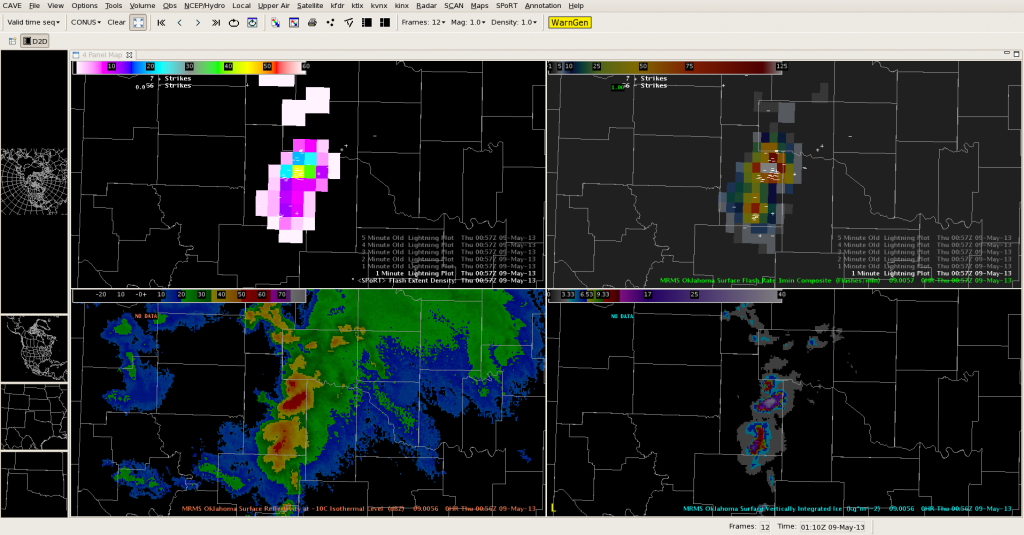Forecasters have a couple of different options to view the pGLM data. The recommended way (and for use with the moving trace / lightning trend tool) is to load via the Obs menu. This Flash Extent Density product is created via NASA / SPORT and uses a higher threshold of points per flash (>25 LMA points) than previous calculations based on comparisons of the LMA with the Lightning Imaging Sensor (LIS) from the TRMM satellite. The second (which was used in previous years of HWT activity) is created at NOAA / NSSL using the same raw Lightning Mapping Area data as the NASA SPORT feed, but uses a minimum threshold of 10 pts per flash (a common threshold in the published literature for LMA systems). Each are valid displays, but for obviously different reasons.
Below is a four panel image of the two pGLM products: NASA/SPORT (left) and NOAA/NSSL (right). The bottom two panels contain multi-radar products: reflectivity at -10C and Vertically Integrated Ice.

peak values on both pGLM plots correspond nicely with max values of the vertically integrated ice (VII) and higher reflectivity at -10C. However, the actual values on the peaks vary greatly, due primarily to the dependance on the minimum number of points per flash. The NASA / Sport system had values as high as 47 flashes per grid box while the NOAA / NSSL (using a much more relaxed minimum) had as high as 125 flashes per grid box.
More research is needed to fully understand what the ground based LMA systems detect (including leader extent, particularly for the real-time, decimated data) compared to the on-board satellite systems such as the GLM.
Kristin Calhoun,
GOES-R Lightning Project Scientist
